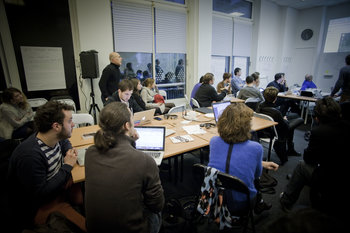
Time
Projects have a start and end date. Programs may be ongoing or have an end date that is years in the future.Complexity
Programs are a way to break complex missions into manageable chunks of work. As a general rule, programs accomplish far greater complexity than a single project. For example, a program may involve multiple concurrent projects that have interdependencies.Objectives & Goals
A program has broad strategic goals such as transforming an organization's business model, product offerings or cost structure. A project may have objectives that are a step towards strategic goals but aren't end-goals in themselves.Budget
A project has a baseline scope, budget and schedule. A program may be tied to an organization's annual budget process whereby it submits a request for funds each year.Calendar
A project may run independently of a firm's financial calendar. A program may be required to report into a firm's quarterly results.Level
Programs are often visible to a firm's executive team and board of directors. Projects may be much lower level, reporting to a program management team or middle management.Change
Programs expect change and projects control change. Programs may accept all ideas for change into a backlog and prioritize things into projects. Projects are meant to deliver a fixed set of requirements with a stable scope.| Overview: Project vs Program | ||
Type | ||
Difference | Projects are initiatives of fixed duration, budget and scope. Programs are long-running initiatives designed to achieve a strategic goal or business transformation. | |
Example | A program to transform a packaged software firm's business model to a software-as-a-service model that involves 50 projects to rewrite 50 software products to be cloud services. | |
Related Concepts | ||




























